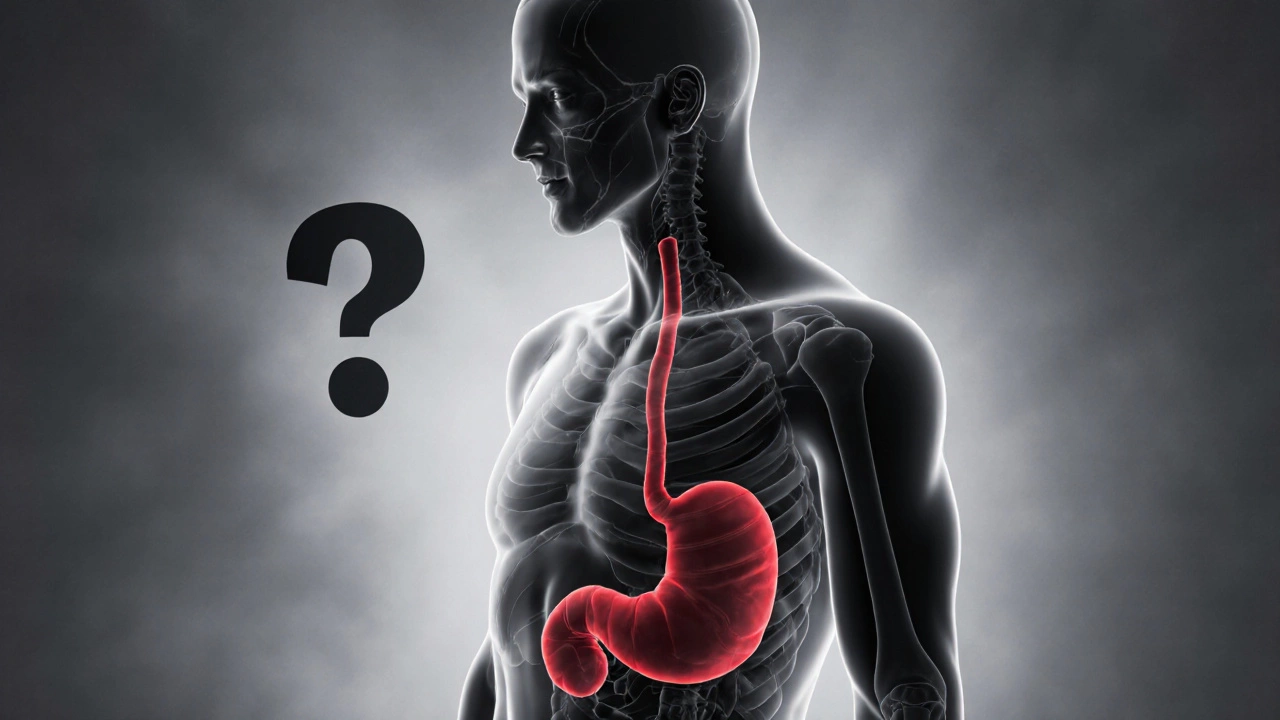
Cancer Fear Comparison Tool
Compare Cancer Fear Factors
Learn about the top cancers ranked by fear based on survival rates, mortality, and detectability. Select a cancer type to see its key statistics.
Pancreatic Cancer Statistics
Top 5 Most Feared Cancers
| Cancer | 5-Year Survival | Mortality Rate (per 100k) | Screening |
|---|---|---|---|
| Pancreatic | 10% | 7.2 | None (research-stage only) |
| Lung | 22% | 18.0 | Low-dose CT for high-risk |
| Brain (Glioblastoma) | 5% (median 15 months) | ≈5.5 | No standard screening |
| Breast | 90% | ≈6.9 | Mammography, MRI (high-risk) |
| Colon | 65% | ≈8.5 | Colonoscopy, FIT test |
When you hear the word "cancer" your mind often jumps to the deadliest, hardest‑to‑treat kind. But which one actually tops the fear chart? The answer isn’t just about headlines - it’s a mix of low survival odds, vague symptoms and limited screening options. Below we break down the cancer that scares most people, why it earns that title, and what you can do to lower the dread.
How We Measure Cancer Fear
Fear isn’t a medical metric, but researchers use three concrete factors to gauge it:
- 5‑year survival rate - the lower the number, the scarier the disease.
- Age‑adjusted mortality - deaths per 100,000 people.
- Detectability - how early symptoms appear and whether reliable screening exists.
When you combine these three, a clear pattern emerges: pancreatic cancer consistently ranks at the bottom of survival charts while also lacking any effective early‑detection test. That makes it the prime candidate for the most feared cancer label.
Pancreatic Cancer is a malignancy of the pancreas that accounts for about 3% of all cancers but only 7% of cancer deaths worldwide
The pancreas sits deep behind the stomach, so tumors grow in silence. By the time pain, jaundice or weight loss appear, the disease is often advanced. Here are the key numbers (2023 global data):
- Incidence: ~495,000 new cases per year.
- 5‑year survival: just 10%.
- Mortality rate: 7.2 deaths per 100,000.
Because there’s no widely‑adopted screening (unlike mammograms for breast cancer), early diagnosis relies on incidentally spotting a lesion during imaging for another issue. That rarity of early clues fuels public anxiety.
Other Cancers That Rank High in Fear
While pancreatic cancer tops the list, several other cancers regularly appear in fear surveys due to high mortality or aggressive behavior.
Lung Cancer is the leading cause of cancer death worldwide, responsible for about 1.8 million deaths annually
Smoking, air pollution and radon are major culprits. Even with low‑dose CT screening for high‑risk smokers, many cases are caught late. 5‑year survival hovers around 22%.
Brain Cancer is a group of malignant tumors that arise in the brain or spinal cord, with glioblastoma being the deadliest subtype
Symptoms such as headaches or vision changes are easily dismissed, leading to delayed diagnosis. Glioblastoma’s median survival is just 15 months, making the disease notoriously feared.
Breast Cancer is the most common cancer among women globally, with a 5‑year survival rate of 90% when caught early
Despite a high survival rate, the emotional impact is huge because it affects body image and family planning. Fear spikes for younger women who think they’re “too young” for routine mammograms.
Colon Cancer is a malignancy of the large intestine, responsible for roughly 900,000 deaths each year
Screening colonoscopies can catch polyps early, but many avoid the procedure due to discomfort or embarrassment, keeping fear levels high.

Side‑by‑Side Comparison of the Top Five Feared Cancers
| Cancer | Incidence (global) | 5‑Year Survival | Mortality Rate (per 100k) | Screening Availability |
|---|---|---|---|---|
| Pancreatic | ≈495,000 | 10% | 7.2 | None (research‑stage only) |
| Lung | ≈2,200,000 | 22% | 18.0 | Low‑dose CT for high‑risk groups |
| Brain (Glioblastoma) | ≈260,000 | 5% (median 15months) | ≈5.5 | No standard population screening |
| Breast | ≈2,300,000 | 90% | ≈6.9 | Mammography, MRI (high‑risk) |
| Colon | ≈1,950,000 | 65% | ≈8.5 | Colonoscopy, FIT test |
Why Fear Persists and How to Combat It
Fear isn’t just about statistics; it’s also about the unknown. Here are three practical ways to shrink that dread:
- Know Your Risk Factors - Family history, smoking, chronic pancreatitis, exposure to certain chemicals, or genetic mutations (e.g., BRCA for breast, KRAS for pancreatic) instantly raise red flags.
- Stay on Top of Screening - Even if a cancer lacks a population‑wide test, high‑risk individuals can join clinical trials, get regular imaging (MRI for pancreatic high‑risk groups), or adopt lifestyle checks that catch early signs.
- Seek Emotional Support - Counseling, support groups, and clear communication with oncologists lower anxiety levels and improve treatment adherence.
When you replace vague dread with concrete actions, the psychological burden drops dramatically.

Resources for Patients and Caregivers
Whether you’re dealing with pancreatic cancer or simply want to understand why it scares so many, these resources are trustworthy and up‑to‑date (2024‑2025):
- American Cancer Society - Guides on risk factors and clinical trials.
- National Cancer Institute (NCI) - Detailed statistics and research breakthroughs.
- Pancreatic Cancer Action Network (PanCAN) - Patient forums and funding updates for early‑detection research.
- World Health Organization (WHO) Cancer Fact Sheets - Global perspective on mortality trends.
Frequently Asked Questions
Which cancer has the lowest 5‑year survival rate?
Pancreatic cancer, with a 5‑year survival of around 10%, holds the lowest rate among major adult cancers.
Why isn’t there a routine screening test for pancreatic cancer?
The pancreas is deep‑located, and early tumors are tiny. Current imaging (CT, MRI, endoscopic ultrasound) is expensive and not specific enough for population‑wide use.
Can lifestyle changes lower the risk of the most feared cancers?
Yes. Quitting smoking drastically cuts lung and pancreatic risk. Maintaining a healthy weight, limiting alcohol, and eating a fiber‑rich diet reduce colon and pancreatic incidence.
What symptoms should prompt a doctor visit for pancreatic cancer?
Persistent upper‑abdominal pain that radiates to the back, unexplained weight loss, new-onset diabetes, or jaundice are red flags that warrant immediate imaging.
Are there any promising early‑detection tests on the horizon?
Researchers are testing blood‑based biomarkers (circulating tumor DNA, CA‑19‑9 combos) and breath tests. Early trials show promise, but none are FDA‑approved yet.

Write a comment